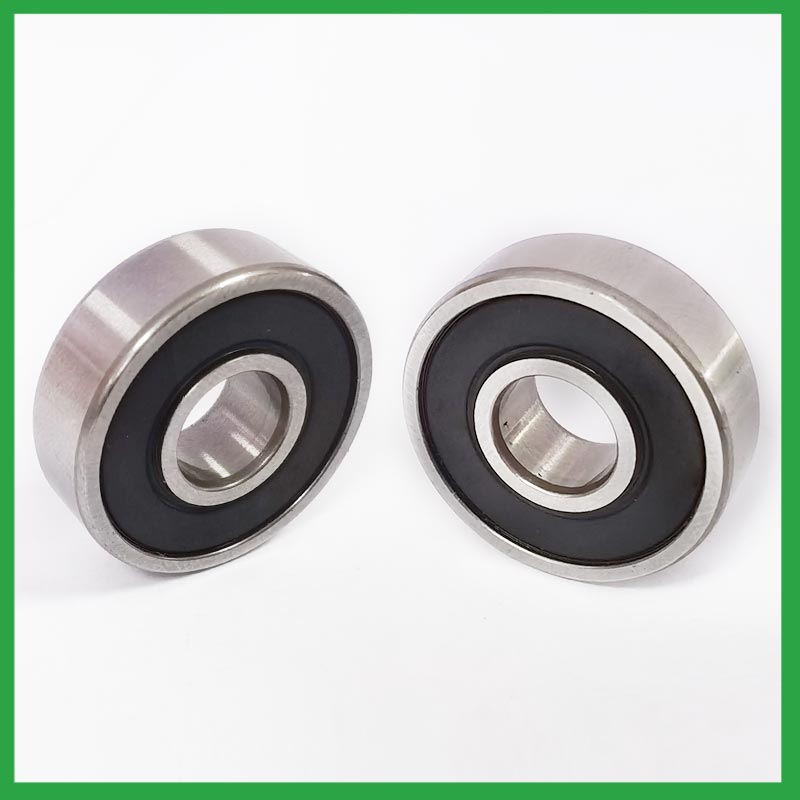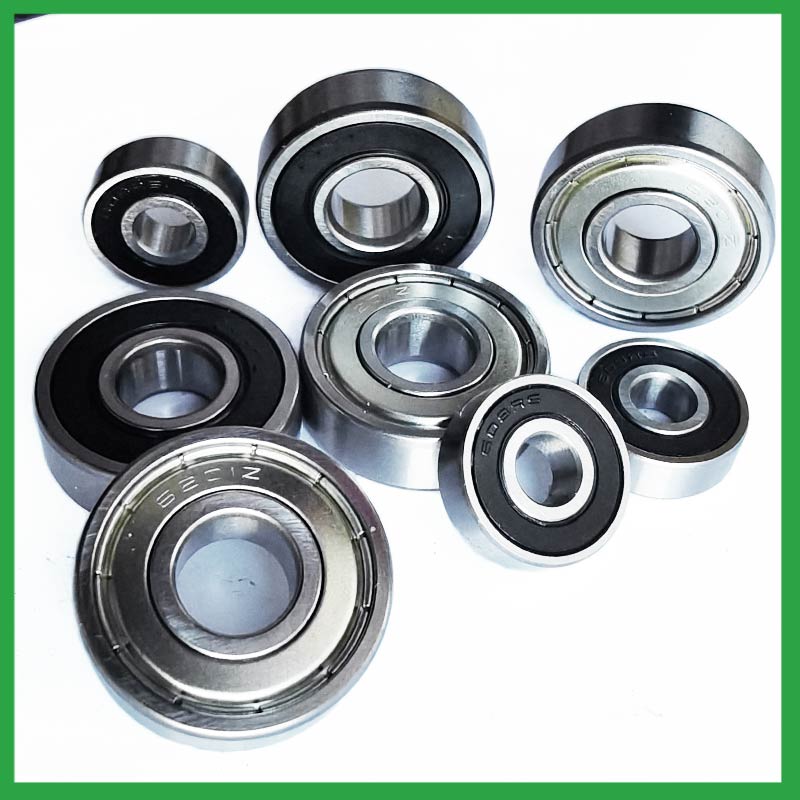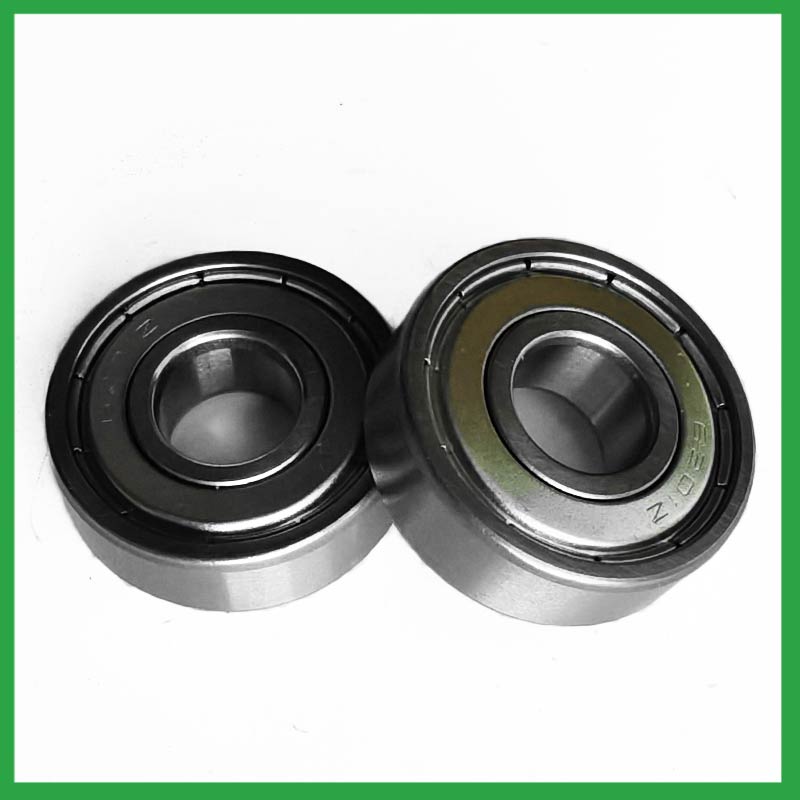PRODUCTS
CONTACT US
Ningbo Nide International Co., Ltd.
一一
· Contact person:Jack Zeng
· Mob/Whatspp/WeChat:0086-13738869026
· Email:emarketing@nide-group.com;marketing4@nide-group.com
· Add:No. 169, Wohushan Road, Daqi Subdistrict, Beilun District, Ningbo, China

Nide team could manufacture ball bearing as per customer’s drawing and samples.
If customer only has samples, we could also design drawing fo r our customer.
We also provide customized service.
Our ball bearing is widely applied the different industrials.
Haishu Nide International Co., Ltd produces and supplies ball bearings.We have professional technical manpower for the mixing of polymer raw materials for the insulation coating of bearings, production of products, and quality control. We will grow together with customers with accurate quality, fast delivery and competitive prices.
In years of practice, we have established a strict quality assurance system. Our product range covers carbon brush,ball bearing,insulation paper,magnet,fan,shaft,thermal protector, etc. They are widely used in fields such as washing machine motor,fan motor,water pump motor,BLDC motor,electric bicycle motor,compress motor,electric automotive motor. We can produce OEM products and make the following drawings. Our principle is to prioritize service and quality!

| Parameter | Information |
| Product Name | ball bearing dresser |
| Place of Origin | Ningbo,Zhejiang,China |
| Brand Name | Nide |
| Material | chrome steel, etc. |
| Type | Ball |
| Warranty | 3months-1year |
| Port | Ningbo/Shanghai |
| Application | small rotary motors,high-speed electric tools, etc. |
| Size(mm) | customize |
| Color | gray+customized |
| Precision Rating | as per customer's requirement |
| Certification | ISO 9001 Certification,CE-stator coil forming machine,CE-insulation paper inserting machine,etc |
| Feature | Simple structure,High precision...etc |
| Packaging Details | Suitable for sea transportation |
| Service | one-stop service |
| Model Number | ball bearing |
| Supply Ability | 100000-500000 Piece/Pieces per Month |
| Lead time (days) | 15-20 (To be negotiated) |
Please note: The above table data is for reference only. For specific information, please contact us.
ball bearing dresser require thrust for installation, which can be achieved by using a combination ring made of steel sleeve and transmission rubber, or by using an adjustment plate to tighten the bolt to form a combination ring installation structure.
During the installation process, pollution from dirt and wear media should be prevented;
Temperature and humidity should be controlled to avoid excessive temperatures during startup and operation;
It should be operated and lubricated in the correct reverse direction to avoid unnecessary damage.
Ball bearings have many advantages, making them highly competitive in the market.
Firstly, they are very durable and have good wear performance, making their service life longer than many other types of bearings.
Secondly, they are easy to install and can provide low friction performance in various applications.
Thirdly, they require a relatively low level of maintenance, making them cost-effective.
In addition, compared to many other types of bearings, their purchase cost is relatively low, making them an economical choice.




ball bearing dresser---FAQs Guide
2.How do preloaded ball bearing dresser enhance rigidity and reduce clearance in high-precision applications?
3.Can ball bearing dresser operate in high-temperature environments like industrial ovens or furnaces, and how are they protected from heat-related damage?
4.How do manufacturers address concerns related to bearing noise and vibration in sensitive equipment?
5.Are there ceramic ball bearing dresser designed for specific applications requiring high-temperature or corrosion resistance?
6.Can ball bearing dresser be used in both vertical and horizontal orientations?
7.Are there ball bearing dresser designed for extreme temperature environments, such as cryogenic or furnace applications?
8.How do cage materials and designs impact ball bearing dresser performance and stability?
9.As a ball bearing dresser manufacturer,How Can We Guarantee Quality?
10.How do cage designs affect ball bearing dresser speed and acceleration capabilities in high-speed machinery?
11.Can ball bearing dresser be customized with special coatings or treatments to meet specific industry standards or regulatory requirements?
12.What is the production capacity of the factory for ball bearing dresser?
13.What is the role of ball bearing dresser in reducing friction and energy loss in rotating machinery?
14.Are there self-aligning ball bearing dresser that accommodate misalignment and shaft deflection in rotating equipment?
15.What is the load distribution within a ball bearing dresser, and how does it vary between different bearing configurations?
1.What are the considerations for selecting sealed or shielded ball bearing dresser to protect against contamination and retain lubrication?
First, the environment in which your ball bearing dresser operate in can help you identify potential contaminants, allowing you to select your shields or seals accordingly. For example, shielded bearings have a gap that can allow finer contaminants or water from washdown applications to enter the bearing and get into the raceways.The challenge for sealing bearings is to seal the bearing by protecting the bearing from contaminants and running efficiencies.
2.How do preloaded ball bearing dresser enhance rigidity and reduce clearance in high-precision applications?
Enhance Rigidity: By applying a controlled axial force, preload increases the bearing's resistance to external forces and moments. This heightened rigidity is essential in applications where any deflection or misalignment must be minimized, such as in machine tools or robotic systems.
3.Can ball bearing dresser operate in high-temperature environments like industrial ovens or furnaces, and how are they protected from heat-related damage?
ball bearing dresser are capable of working at temperatures up to +842°F (+450 °C). Special lubricants, seals and coatings make this possible by protecting the ball bearings from heat damage.
4.How do manufacturers address concerns related to bearing noise and vibration in sensitive equipment?
From a ball bearing dresser manufacturing perspective, a low noise or vibration rating is achieved by paying attention to the surface finish of the raceways and balls, their roundness, and selecting the correct cage design. Finely filtered low noise greases can also be used to reduce vibrations.

5.Are there ceramic ball bearing dresser designed for specific applications requiring high-temperature or corrosion resistance?
Ceramic ball bearing dresser are a special type of bearing made of ceramic materials, offering superior wear resistance, corrosion resistance, and high-temperature performance. They provide excellent performance in applications requiring high speeds, high temperatures, and resistance to corrosion.
6.Can ball bearing dresser be used in both vertical and horizontal orientations?
Sleeve Bearings: Sleeve bearings, also known as plain bearings, employ a simple yet effective mechanism. A cylindrical sleeve separates the rotating shaft from the stationary portion of the bearing, reducing friction and enabling smooth rotation. Sleeve bearings are characterized by their quiet operation, cost-effectiveness, and suitability for horizontal mounting orientations.
Ball Bearings: Ball bearings introduce small metal balls between the moving parts, providing enhanced durability and reduced friction. This design allows for smoother and more efficient rotation, making ball bearings well-suited for high-performance applications and vertical installations.
7.Are there ball bearing dresser designed for extreme temperature environments, such as cryogenic or furnace applications?
High temperature ball bearing dresser use specialized lubricants to stand up to high temperatures. Grease-packed bearings are pre-filled with fluorine grease for high temperatures, while YS and SJ bearings use molybdenum disulfide (MoS2) solid lubricant to withstand temperatures up to 350°C and 400°C respectively.
8.How do cage materials and designs impact ball bearing dresser performance and stability?
As the core component of rotating machinery, the performance and reliability of high-precision ball bearing dresser directly affect the overall performance and life of the machine and instrument . The increase of the rotational speed will aggravate the collision and friction of the cage, which will lead to the decrease of the rotational stability of the cage. The unstable movement of the cage could in turn lead to more severe collision and wear, thus reducing the life and reliability or even the destruction of the bearing.
Therefore, it is very necessary to study the cage stability to guarantee the stable operation of bearings. However, the dynamic characteristics of the cage is very complex. Parameters such as load, rotational speed and lubrication may affect its kinematic and tribological conditions, which leads to the change of its motion behavior.

9.As a ball bearing dresser manufacturer,How Can We Guarantee Quality?
Always a Pre-production Sample Before Mass Production;Always Final Inspection Before Shipment.
10.How do cage designs affect ball bearing dresser speed and acceleration capabilities in high-speed machinery?
In high-speed ball bearing dresser, external load has a great effect on cage stability and sliding ratio, especially for the bearings at work in the starting process. The cage stability is worse in the beginning of the bearing starting process. The axial load greatly influences cage dynamic performance in the bearing starting process.
In addition, while ball bearings worked under steady conditions, axial load and radial load both have a great influence on cage dynamic performance. The effects of axial load on cage dynamic performance during the bearing starting process are opposite from the effects under steady conditions.
11.Can ball bearing dresser be customized with special coatings or treatments to meet specific industry standards or regulatory requirements?
Yes, ball bearing dresser can be customized with special coatings or treatments to meet specific industry standards or regulatory requirements.
1. Corrosion-resistant coatings: These coatings are used to protect the bearings from corrosion caused by exposure to moisture, chemicals, and other corrosive substances.
2. High-temperature coatings: These coatings are used to improve the thermal stability and performance of bearings in high-temperature environments.
3. Food-grade coatings: These coatings are specially designed for applications in the food and beverage industry, where bearings come into contact with food, beverage, or pharmaceutical products.
4. Anti-static and non-conductive coatings: These coatings are used to dissipate static electricity, which can cause damage to electronic components.
5. Specialized lubrication treatments: Bearings can be treated with specialized lubricants that meet specific industry standards or regulatory requirements.
12.What is the production capacity of the factory for ball bearing dresser?
The production capacity of Ningbo Haishu Nide International is:50000000pcs/month

13.What is the role of ball bearing dresser in reducing friction and energy loss in rotating machinery?
ball bearing dresser reduce friction by using smooth balls lubricated with oil or grease that freely roll between a smooth inner and outer surface. The main concept of the ball bearing is that objects that roll past each other produce less friction than if the objects were sliding against each other.
14.Are there self-aligning ball bearing dresser that accommodate misalignment and shaft deflection in rotating equipment?
These ball bearing dresser are particularly suitable for applications where misalignment can arise from errors in mounting or shaft deflection. A variety of designs are available with cylindrical and taper bores, with seals and adapter sleeves and extended inner rings.
15.What is the load distribution within a ball bearing dresser, and how does it vary between different bearing configurations?
The load distribution between the rolling elements and raceway is crucial in performance evaluation of rolling element bearings. Determine the load distribution by measuring the strain response at the bearing surface with a notched housing. Finite element analysis shows that the introduction of notches does not affect the load distribution. An experimental system was developed to investigate the load distribution in a cylindrical roller bearing. The experimental static load distribution agrees well with the theoretical calculation. The dynamic load at specific position of load zone reflects the manufacture difference among rollers and dynamic balance of distributing loads.

